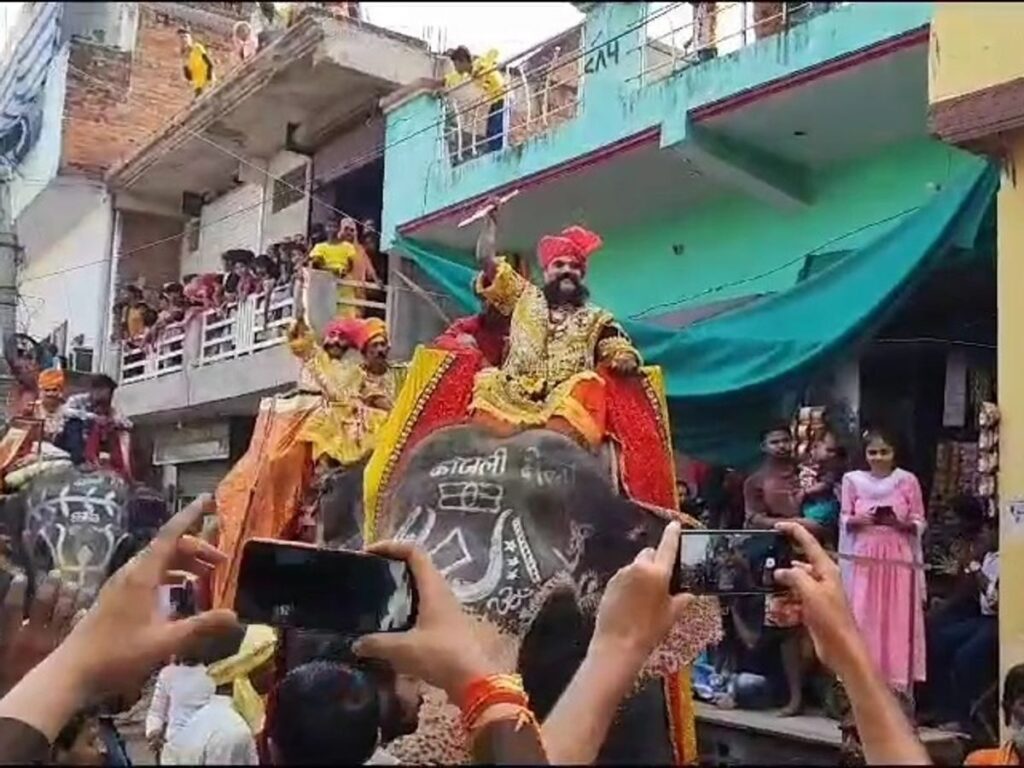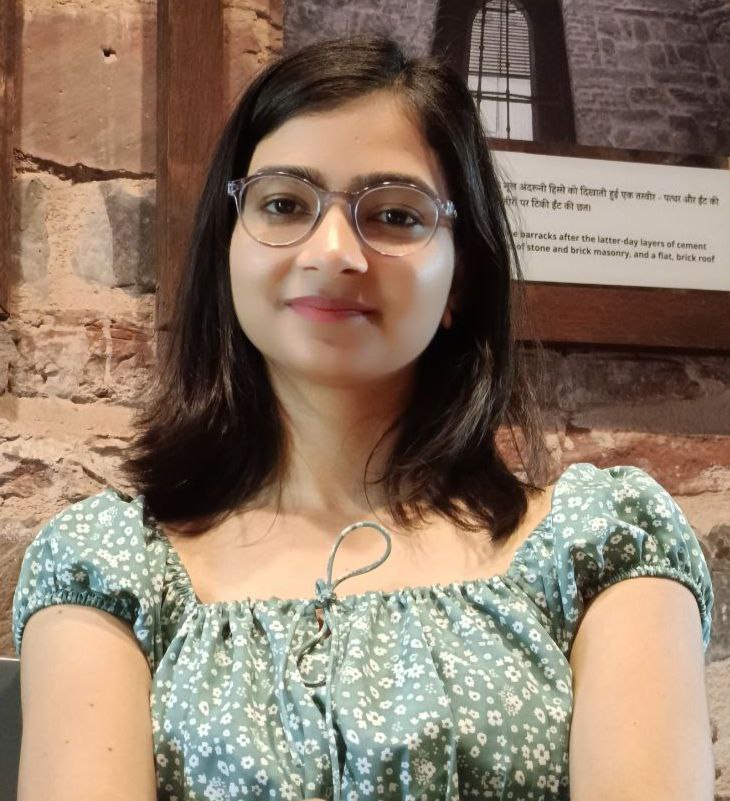The Kajali fair is a good opportunity to promote the culture of Mahoba. Mahoba is a small district of Uttar Pradesh lying down in Bundelkhand region which is known as administrative capital of chandela rulers in history (according to Colonel Toad). This fair is the biggest historical and cultural festival for Mahoba residents. In which a huge procession is taken out on the day of Kajali, in which you can easily understand the valor of Alha Udal in the form of a procession. Kirti Sagar, which is built in the beep of the city. It has been a witness to the history of Mahoba where a fair is organized here.
Fairs are significant in cultural studies as they serve as vibrant platforms for the celebration and preservation of traditions, arts, and heritage. They provide a space for communities to share their customs, fostering cultural exchange and understanding. Fairs also contribute to the overall well-being of communities by promoting social cohesion and providing opportunities for accessing resources and developing skills.
Fairs are significant in cultural studies as they serve as vibrant platforms for the celebration and preservation of traditions, arts, and heritage. They provide a space for communities to share their customs, fostering cultural exchange and understanding. Fairs also contribute to the overall well-being of communities by promoting social cohesion and providing opportunities for accessing resources and developing skills.

I have heard from my childhood that people come from a distance to see the fair and they used to stay in the houses of their relatives till the time the fair used to be there. My grandmother’s mother used to walk a long way from the village just to attend the fair in Mahoba every year. Nowadays young people lose excitement for such cultural events so as a resident of such heritage it’s been important to highlight the historical and cultural significance of this heritage through my article.
In the famous Kajli fair of North India, a grand and huge procession was taken out amidst a crowd of lakhs, in which hundreds of emotional tableaux along with elephants, camels and dancing horses refreshed the memories of the valor and valor of the brave warriors Alha-Udal. In the land of heroes, this festival of bravery “Kajli Mela” has now become a “religious festival”.
This fair is not only a religious festival but also significant from an economic perspective. Hundreds of local shopkeepers and regional sellers take it as an opportunity to generate huge income for the whole year. One or two decades ago people used to store the common necessary items for the whole year. Fair is still known for antique articles from different regions.
n the procession the brave warrior Alha and his fellow warriors used to show up on four elephants. When these warriors came out on the streets brandishing swords while sitting on elephants, the spectators became emotional and bowed down to these brave warriors of the Chandel kingdom a thousand years back.
I Every year, on the last day of Sawan Kajli fair is celebrated in Mahoba district of Uttar Pradesh. In 1182 AD, the ruler of Delhi, Prithviraj Chauhan, defeated the army of Mahoba’s Chandel ruler, whose commanders, the brave warriors Alha and Udal, with their valour and courage, cut down Prithviraj’s army like carrots and radishes. This war took place on the banks of Kirat Sagar on the full moon day of Sawan. That is why, while Raksha Bandhan is celebrated on the full moon day in the whole country, Kajli fair is celebrated in Mahoba (Bundelkhand) by celebrating Raksha Bandhan a day later.
Prof. L. C. Anuragi said People wait for this historic Kajli fair throughout the year. The people of this area have started celebrating the Kajli fair from a religious point of view. And to witness this historic act of bravery, men and women gather in lakhs. With elephants, camels and dancing horses, the queens of the Chandel rulers, Guru Gorakhnath and Amar, attractive tableaux were presented along with Udal riding on a horse protecting the palanquin of princess Malhana, which presented the valor and spiritual significance of the Bundeli land of Jhansi.
Among the thousands of pleasant tableaux in the Kajli folk festival, the palanquin of queen Chandravali and Malhana always become the main attractions, while seeing Alha-Udal engaged in penance with Amar Guru, Malhana going to immerse the kajaliyas with her friends, people became intoxicated with the joy of victory after the fierce battle of 1182. This huge procession that started from the Haveli Darwaza of Mahoba toured the entire city and ended in the evening at the battle site Kirat Sagar. Women immersed Kajaliya in Kirat Sagar and a “Aalha” singing was organized there. Alha is such a heroic song that people’s arms start trembling after listening to it and people become determined to take revenge from their enemies. The Kajari fair has a special significance for the women here. After tying the Kajaru, women tie Rakhi on their brother’s wrist, so women wait for this day specially!
Bhavna Chaurasia (Local woman) said the Kajari fair started in 1182 to show the valor and bravery of Alha-Udal, and has been going on continuously for 828 years. Every year its form is increasing. No one knows when in these 843 years this Kajal fair turned into a religious fair, but today the people of entire Bundelkhand celebrate this traditional Kajal fair with religious faith, not only this, the religious fair held here a day after Raksha Bandhan is celebrated with great religious faith. People show religious unity by tying Rakhi. Such a unique understanding and unity is not seen anywhere.
Prof. L.C. Anuragi told that In the twelfth century, in the year 1182, the king of Delhi, King Prithviraj Chauhan, tried to forcibly adopt Chandravali, the beautiful daughter of Chandel King Parmal of Mahoba. After Alha-Udal fought a war to protect Chandravali and defeated Prithviraj Chauhan, the “Kajali Utsav”, which used to be an agricultural festival, became a symbol of the pure love between brother and sister. In the Kajali fair, women carry the Kajari melons sown at home on their heads and take them to Kirat Sagar in groups with a lot of noise and immerse them in the water. In this area, Hindus, Muslims, Sikhs and Christians all respect the Kajalis as sacred. This Kajali Festival of Mahoba has become a symbol of goodwill.
The Kajli Mela of Mahoba is a vibrant and culturally rich festival that showcases the traditions, customs, and spirit of the region. Celebrated with great enthusiasm, it not only marks an important agricultural event but also serves as a platform for people to come together, celebrate folk music, dance, and the region’s cultural heritage. The mela brings the community closer, preserving ancient customs and creating an opportunity for younger generations to connect with their roots. Overall, the Kajli Mela stands as a testament to Mahoba’s deep cultural history and continues to be a symbol of unity, joy and tradition.

Kajal Tiwari holds a Masters degree in History from Banaras Hindu university, Varanasi. She has keen academic interest in Indian folk culture and tradition with a passion for exploring the folk culture of North India through Oral History with a deep commitment to preserve India’s rich folk stories, festivals, music and dance forms.
